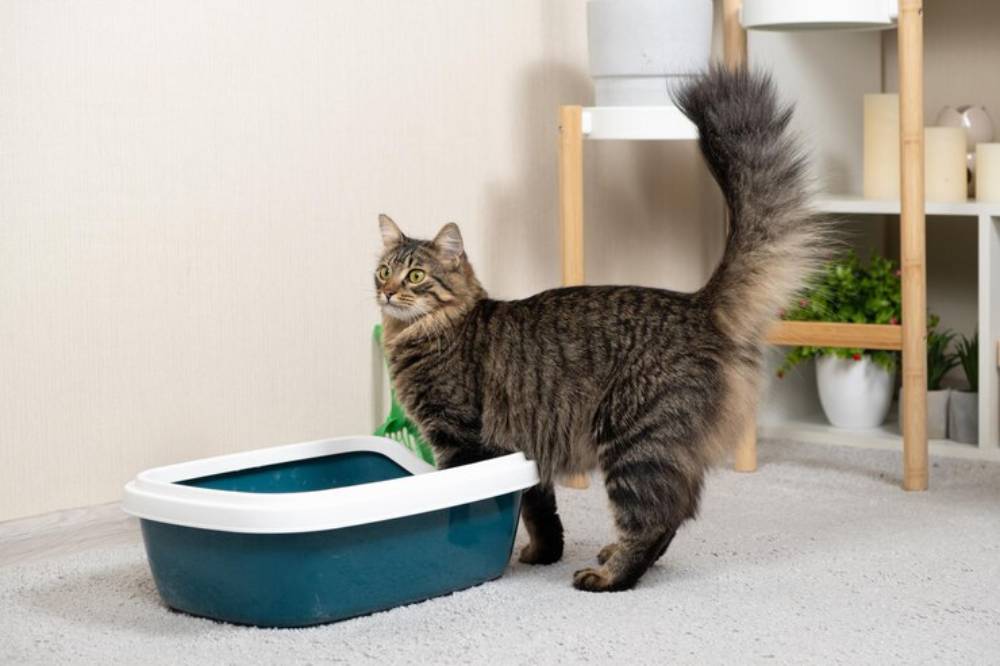
How to Introduce a New Litter Box to Your Cat
Introducing a new litter box to your cat can feel like trying to convince a stubborn friend to try a new restaurant — some will hop right in, others will act like you’ve committed a grand betrayal. Whether upgrading an old box, welcoming a new kitten, or managing a multi-cat household, getting this transition right is key to keeping your home clean and your cat content.
In this guide, we’ll walk you through everything you need to know about cat litter box training, from recognising your cat’s signals to avoiding common mistakes. You’ll feel confident creating a smooth, stress-free litter box introduction for your feline friend by the end.
Ready to make this transition easier for both you and your cat? Let’s dive in!
Why Introducing a New Litter Box Matters?
Cats are creatures of habit. They rely on familiar scents, textures, and routines to feel secure. Introducing a new litter box disrupts their carefully curated world, which can cause anxiety or even lead to “accidents” outside the box.
A thoughtful approach to introducing a new litter box ensures:
- Reduced stress for your cat
- Fewer accidents around the house
- A smoother transition into a new litter routine
- Long-term litter box success
Neglect this step, and you could face bigger behavioural issues. Trust us, it’s worth doing right the first time.
Step-by-Step: How to Introduce a New Litter Box

1. Choose the Right Litter Box
First things first — not all litter boxes are created equal. Your cat’s comfort is paramount.
Consider:
- Size: Bigger is usually better. Cats like to move around freely.
- Entry Style: Senior cats or kittens might prefer low-entry boxes.
- Covered vs. Uncovered: Some cats enjoy privacy; others feel trapped.
- Material and Cleanability: Smooth plastic is easy to sanitise.
Tip: If you’re replacing an old box, match the style your cat is already used to before making significant changes later.
2. Place the New Box Strategically
Location, location, location — it’s as important to cats as to estate agents.
Ideal placement tips:
- Quiet but accessible: Avoid loud appliances and high-traffic areas.
- Away from food and water: Cats naturally avoid eliminating near where they eat.
- Private yet open: Cats like a clear exit route for safety.
If a second box is introduced, place it in a different area to prevent territorial disputes.
Related: Learn more about ideal litter box locations for multi-cat homes.
3. Keep the Old Box Available (For Now)
When it comes to new litter box tips, this one’s a game-changer: don’t remove the old box immediately.
Place the new box next to the old one and let your cat investigate at its own pace. Cats are naturally curious; given time, they’ll likely check it out without pressure.
Watch for signs they’re using both—that’s your green light to phase out the old box if necessary.
4. Use Familiar Litter
If you want your cat to accept the new box, keep the type of litter it already uses.
Changes in:
- Texture
- Scent
- Depth
Can all trigger litter box avoidance. If you must switch litter types, gradually mix increasing amounts of the new litter with the old over a few weeks.
5. Make the New Box Appealing
You can encourage your cat to explore the new box using a few clever techniques:
- Add a sprinkle of used litter from the old box to make it smell familiar.
- Praise and reward your cat (with treats or affection) after they use the new box.
- Keep the box spotless — many cats will avoid a dirty litter tray.
Just like humans prefer a clean bathroom, cats also appreciate a fresh, tidy toilet!
Common Problems (And How to Solve Them)
Even with careful planning, sometimes cats need extra encouragement. Here’s how to troubleshoot:
My Cat Refuses the New Box
- Double-check placement. Is it too noisy or exposed?
- Inspect the box size and shape. Is it too small or uncomfortable?
- Rule out medical issues. Sudden litter box avoidance can signal urinary problems — consult a vet if concerned.
My Cat Uses Both Boxes
- Good news! Your cat is adjusting well.
- If you prefer a single box, wait a few weeks and remove the old one once usage is firmly established.
My Cat Eliminates Outside the Box
- Clean accidents thoroughly with an enzymatic cleaner to remove scent markers.
- Never punish your cat — this increases stress and worsens the problem.
- Reintroduce positive reinforcement and evaluate the box setup.
Related: How to clean cat urine naturally without harsh chemicals.
Lucy’s Smooth Transition
Take Lucy, a 3-year-old tabby deeply attached to her battered old litter tray. When her owner, Emma, upgraded to a larger, uncovered box, she worried Lucy would revolt.
Instead of tossing the old tray immediately, Emma placed the new one nearby, sprinkled in some familiar litter, and let Lucy explore. Within days, Lucy preferred the new box — it was roomier and better matched her stretching habits!
Moral of the story: Patience, familiarity, and a touch of feline psychology go a long way.
Tips for Special Situations
Introducing a New Box for a Senior Cat
Older cats may struggle with high sides or covered entries. Choose a low-sided, easy-access box and ensure it’s on the main living floor, not requiring stairs.
Training a New Kitten

Young kittens are curious but also easily overwhelmed. At first, place the box close to their sleeping area and guide them gently after meals and naps.
Multi-Cat Households
In homes with multiple cats, the golden rule is: The number of cats + 1 = the minimum number of litter boxes.
This prevents territorial fights and keeps everyone happy.
Set Your Cat Up for Litter Box Success
Introducing a new litter box doesn’t have to be a dramatic ordeal. With a bit of foresight, empathy, and patience, you can make the experience smooth and positive for you and your cat.
Remember:
- Choose the right box
- Place it wisely
- Keep things familiar
- Let your cat set the pace
Respecting your cat’s natural instincts and offering gentle encouragement will help you establish a lifetime of good litter habits.
Ready to set your cat up for success? Share your experiences or questions in the comments below — we’d love to hear your story! And don’t forget to subscribe for more pet care tips that keep your home happy, healthy, and fur-filled.


